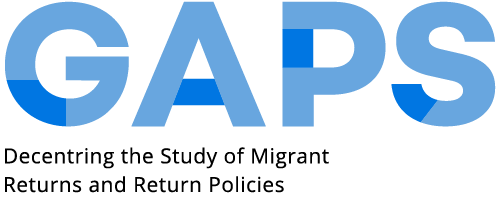Synthesis report – Return migration governance in the African and Middle Eastern regions and the role of the EU
Authors:
Nora Stel, Marieke van Houte, Selma Blanken | Radboud University (Nijmegen)
Executive Summary:
This report explores return migration governance in the African and Middle Eastern regions and the role of the EU by looking at the governance of coerced returns from Turkey, Lebanon, Jordan, and Iraq to Syria; from Morocco, Tunisia, and Libya to Nigeria; and from Iran and Turkey to Afghanistan.
This study is situated in a CONTEXT where the migration management of the African and Middle Eastern host countries under study has increasingly focused on return.
This is a consequence of the gradually more protracted nature of specific displacement situations.
It also follows from the longer term development of the shift in EU migration management towards externalization and containment. This shift has undermined the circularity of mobility between and within regions. Regional host countries increasingly faced an ‘integration or return’ logic.
The CHARACTERISTICS of the ensuing return migration governance in the African and Middle Eastern Regions differ across contexts.
In general, the report observes that the type of return pursued by these countries on the most significant scale is self-return, whereby humanitarian migrants are pushed to individually and independently return to their country of origin.
This happens through mutually reinforcing push factors created by policies and practices, or the absence thereof, that produce legal and socio-economic exclusion and (structural) violence, resulting in both irregularization and subsequent marginalization.
This combined irregularization and marginalization does not merely generate self-return. It also coerces migrants to participate in facilitated return. By criminalizing (particular groups of) migrants, such policies and practices also serve as a legitimation for deportation – a dynamic further exacerbated by the securitization of migration management.
Overall, coerced return migration governance in the countries under study is highly informal and opaque, with the more overly coerced types of return (pushbacks and deportations) particularly lacking systematic monitoring and transparent reporting. This partly follows from the complex assemblage of actors involved, ranging from state authorities to hybrid political parties, and international organizations.
The DRIVERS of coerced return migration governance in the countries under study partially follow from domestic interests, where real and politically instrumentalized socio-economic pressures and securitized rhetoric generate public demand for return.
They are also rooted in international interests, where EU donor diplomacy focused on containment and preventing onward movement on the one hand contributes to a regional context favouring return and on the other hand imposes a focus on particular types of returns (self-return and facilitated return).
The EU also crucially shapes the capacities of regional host states for coerced return migration governance – which vary widely per context. Such capacity-building is officially designated for self-return and facilitated return but is often also leveraged for pushbacks and deportation. This comes in the form of policy advice, training, and material support, often channelled through international organizations.
The CONSEQUENCES of coerced return migration governance in the countries under study include:
the strategic blurring of different forms of more or less overtly coerced return, that are presented as voluntary; a systematic undermining of humanitarian migrants’ and refugees’ protection, including erosion of the non-refoulement principle;
the sabotaging of mobility through the prevention of onward movement as well as re-entry after coerced return;
and making human mobility a key agenda item for diplomacy in the region, in which enforcing, resisting, and instrumentalizing return plays an ever more central role.
Please find the entire DOI report by clicking the button below:

